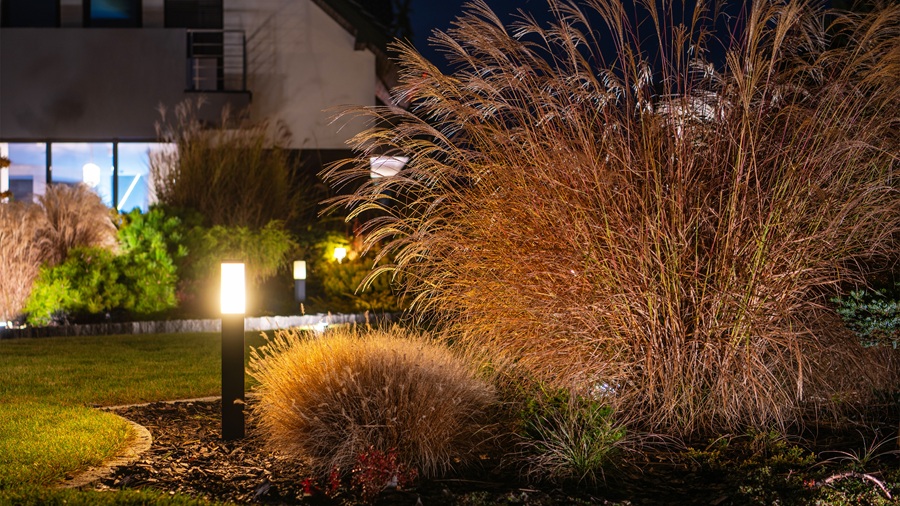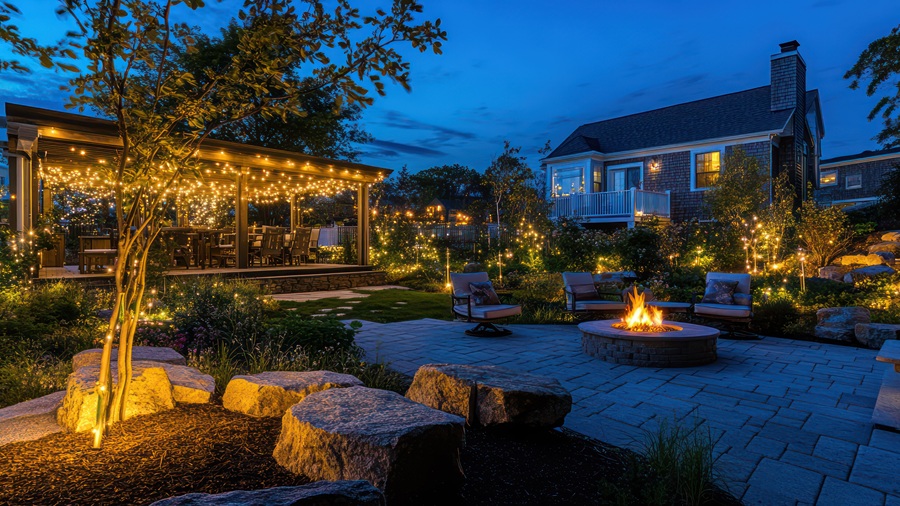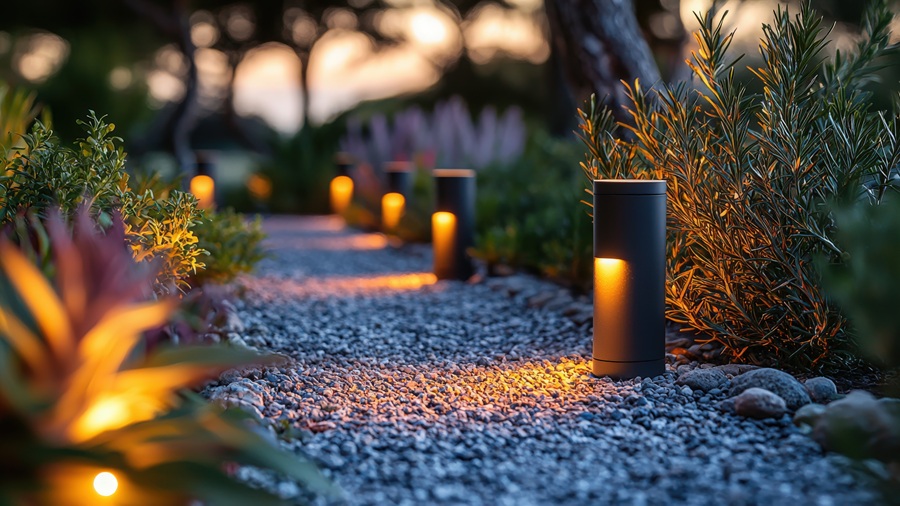How landscape lighting enhances safety, curb appeal and functionality
Landscape lighting plays a central role in shaping the entire outdoor experience after sunset
INTEGRATING WELL-PLANNED OUTDOOR illumination into a property can significantly enhance its overall usability and appearance. As homeowners increasingly explore ways to improve their exterior environments, lighting becomes one of the most effective design tools. According to insights from gtasunrise.com, thoughtful lighting placement can influence everything from nighttime visibility to aesthetic harmony, making it a foundational component of comprehensive landscape design.
The Role of Lighting in Modern Landscape Architecture
Landscape lighting has evolved from a basic utility feature into a sophisticated design element that shapes how outdoor areas function after sunset. Its purpose is no longer limited to providing visibility. Instead, modern lighting strategies highlight architectural features, support safe movement, emphasize plantings, and extend the usability of outdoor living spaces.
Understanding how lighting affects perception and spatial flow is essential. Illumination can draw attention to textures, create depth, and produce subtle contrasts that redefine the landscape at night. When combined with other design elements—such as hardscapes, pathways, and vegetation—lighting helps create cohesive, inviting outdoor environments.

Improving Safety Through Strategic Illumination
Improving safety is one of the most important functions of landscape lighting. Well-placed fixtures make it easier to navigate pathways, stairs, and uneven surfaces, reducing the risk of accidents after dark. Subtle illumination along walkways, changes in elevation, and narrow routes provides clear visual guidance without causing glare.
Targeted lighting at entry points and gentle perimeter illumination further support visibility and awareness, helping residents identify obstacles and move confidently around the property. The goal is not intense brightness, but controlled, balanced light that enhances natural visibility and ensures safe movement throughout the outdoor space.
Adding Curb Appeal to the Exterior Environment
Beyond safety, landscape lighting enhances the character and aesthetic quality of residential and commercial properties. It accentuates features that may go unnoticed during the day and provides depth that enriches nighttime views.
Highlighting Architectural Elements
Exterior lighting can be used to draw attention to facades, columns, arches, trim work, or materials such as stone and wood. Techniques like grazing or uplighting introduce shadows and highlights that emphasize surface textures without overwhelming the viewer.
Showcasing Plantings and Natural Features
Trees, shrubs, ornamental grasses, and garden structures gain new visual prominence when illuminated intentionally. Lighting selected for color temperature and beam spread can highlight unique shapes, branching patterns, or seasonal foliage.
Creating Layered Visual Interest
Designers often incorporate multiple lighting layers—ambient, task, and accent—to achieve a balanced visual composition. Combining these layers ensures the landscape remains engaging while avoiding uneven lighting or harsh contrasts.
Enhancing First Impressions
A well-lit exterior enhances the property’s identity. Thoughtful nighttime presentation can strengthen overall design coherence, making the landscape feel welcoming, orderly, and aesthetically refined.

Expanding Outdoor Functionality After Sunset
Landscape lighting greatly extends the functionality of outdoor areas after sunset, making patios, decks, and recreational spaces usable well into the evening. Soft ambient lighting promotes relaxation and social activities, while task-focused fixtures enhance visibility in outdoor kitchens, grilling zones, and other areas where precision is crucial.
Recreation and leisure spots such as play areas, garden corners, or seating zones also benefit from balanced illumination that enhances visibility without overwhelming the space. Gentle, warm-toned lighting around water features or quiet seating areas helps create a calm atmosphere, allowing outdoor spaces to remain comfortable, safe, and enjoyable long after daylight fades.
Energy Efficiency and Sustainable Lighting Practices
Technological advancements have transformed outdoor lighting into a more sustainable feature of landscape design. Modern solutions allow users to reduce energy consumption while maintaining excellent illumination quality.
LED Technology
LED fixtures provide long lifespans, minimal heat output, and significantly lower energy use compared to traditional halogen or incandescent lights. They also offer various color temperatures that can be selected to match the desired ambience.
Smart Controls and Automation
Timers, sensors, and app-based systems enable precision control over lighting schedules. Automated settings help reduce unnecessary usage and ensure consistent illumination across the property.
Directional and Shielded Fixtures
Shielded or downward-facing fixtures minimize light pollution and prevent glare. They also preserve dark-sky conditions while maintaining the intended lighting effect within the immediate area.
Low-Voltage Systems
Low-voltage installations are both energy-efficient and adaptable. They are commonly used in residential settings due to their safety benefits and design flexibility.
By integrating energy-conscious practices, landscape lighting can remain environmentally responsible without sacrificing performance.

Understanding Different Lighting Techniques
Several lighting techniques are commonly used to create effective and visually appealing nighttime landscapes, each serving a different purpose. One of the most popular methods is uplighting, where fixtures placed at ground level shine upward to emphasize trees, architectural elements, or garden structures. This approach adds height and drama, making key features stand out after dark.
Another widely used technique is downlighting, which involves placing lights higher up—on trees, eaves, or pergolas—so that illumination falls naturally downward. This can mimic soft moonlight, making it ideal for pathways, seating areas, and open spaces where gentle, even lighting improves visibility without feeling harsh.
A third frequently applied method is washing, which uses wide-beam fixtures to bathe walls, hedges, or large plantings in soft, uniform light. Washing helps create a sense of depth and highlights broad areas without drawing attention to a single focal point. Together, these techniques allow designers to build balanced nighttime environments that enhance both beauty and functionality.
Seasonal and Environmental Considerations
Seasonal changes and environmental conditions play an important role in how well outdoor lighting systems perform. Weather factors such as rain, snow, and humidity can affect fixtures, making it essential to rely on durable materials and sealed housings that maintain consistent operation throughout the year. Vegetation also evolves seasonally: as trees and shrubs grow or shed leaves, lighting may need occasional adjustment to preserve visibility and design balance.
It is equally important to consider the local ecosystem. Warm color temperatures and shielded fixtures help reduce disruption to nocturnal animals and insects, ensuring responsible illumination. By taking climate, foliage, and environmental impact into account, property owners can keep their landscape lighting effective and stable in the long term.
Landscape lighting plays a central role in shaping how exterior environments function and appear after sunset. It enhances safety by guiding movement, improves curb appeal through thoughtful visual emphasis, and expands functionality by extending the usability of outdoor spaces. When planned with intention and supported by energy-efficient technologies, lighting becomes a versatile tool that elevates the entire outdoor experience.
For additional insights into effective lighting methods and outdoor design principles, resources available through GTA Sunrise offer valuable guidance for anyone interested in understanding the technical and aesthetic aspects of landscape illumination.

